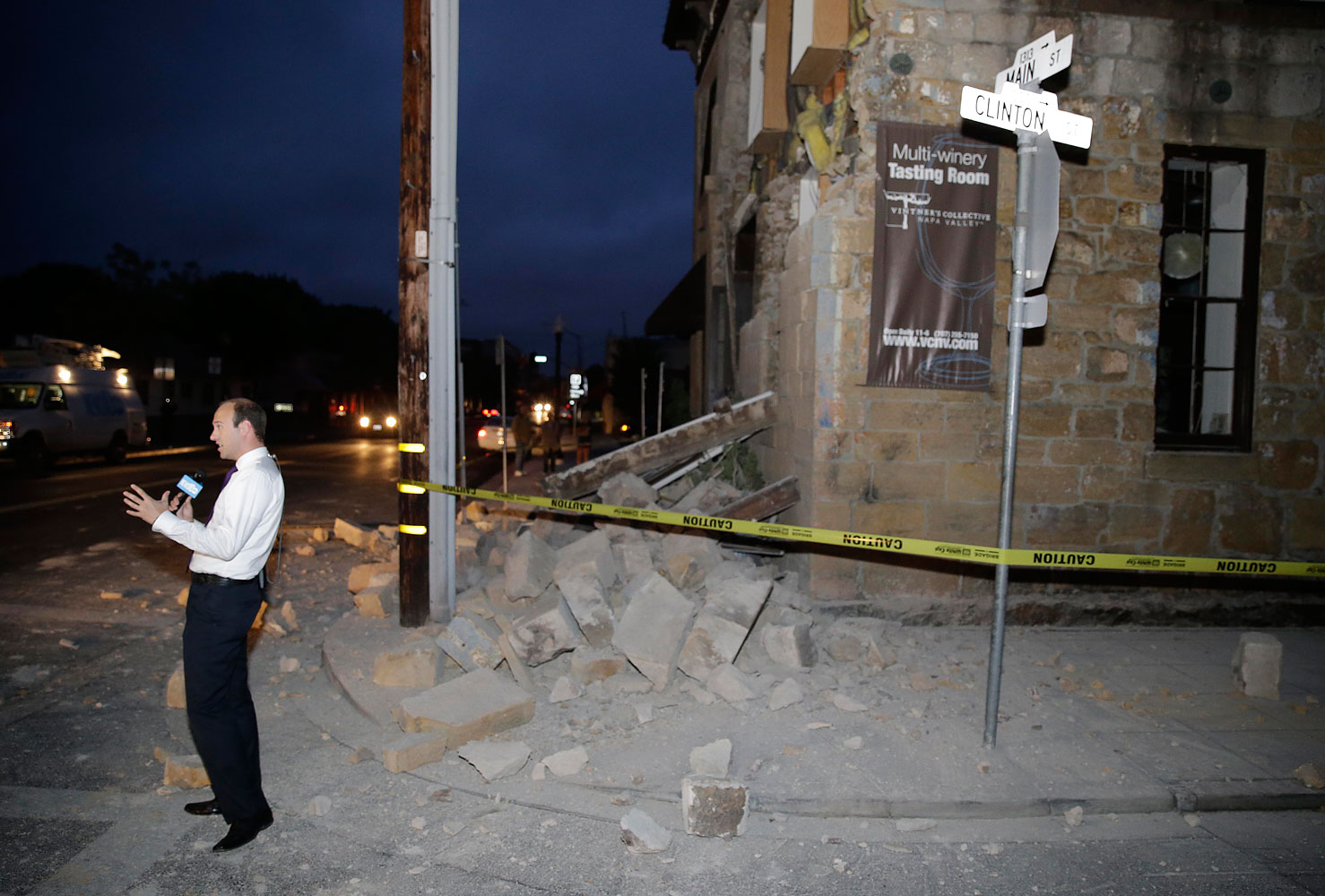
Ten seconds could save your life. That’s the message from researchers developing an early-warning system in California that could eventually alert the public an earthquake is about to hit.
The research program, run by the U.S. Geological Survey (USGS) in partnership with several California universities, is still in beta form, but was put to the test last weekend when an earthquake struck the Napa area. At the University of California, Berkeley, to the south, the system detected and sent out a warning signal to the scientists about six seconds before the tremor reached the area.
The technology behind the system uses sensors across the state that detect early waves from an earthquake before the main event strikes. While it’s not possible to issue warnings to those located right next to an earthquake epicenter, those further away could be warned seconds or even a minute in advance.
Doug Given, USGS’s early-earthquake-warning coordinator, says 10 seconds might not seem like a lot, but it could be enough for people to take cover before an earthquake hits and for public services and private industry to take precautionary steps. This might include systems that force elevators to let passengers off at the closest available floor and those that let first responders know they should open garage doors ahead of tremors so they can quickly begin search-and-rescue missions afterward. Given says other applications include letting hospitals know an earthquake is coming, so they can prepare doctors and patients. “If you’re in an MRI machine, you might want them to pull you out before it starts shaking hard,” says Given. Likewise, he says surgeons performing delicate operations — on eyes, for example — could have notice that their work is about to be interrupted.
“Imagine being a dental chair,” says Margaret Vinci, manager of the Office of Earthquake Programs for the California Institute of Technology, one of the colleges partnering with USGS. “Would you not want that dentist to pull that drill out of your mouth?”
Given and Vinci also say a statewide early-earthquake-warning system could tell rapid transit systems to slow trains to help prevent derailments. A similar alert program exists in earthquake-prone Japan, where earthquake warning alerts automatically slow bullet trains.
Japan and Mexico are two countries that already have the kind of earthquake-warning system California lacks. Devastating quakes in those countries prompted major public investments in such systems. As recently as April, residents in Mexico City had a full minute of warning before a 7.2-magnitude quake 170 miles away rocked the capital.
California’s program, though, is hobbled by lack of adequate funding, according to Given, who says the program needs an investment of $80 million over five years and about $12 million a year to maintain operations. California passed a law recently calling for a statewide early-earthquake-warning system to be set up, but did not provide funding. Given says the program currently includes about 400 sensors set up around the state, but needs at least double that figure for the warning system to be fully functional. “We hope we will be the first country that builds its system before the big earthquake rather than after,” Givens says.
Investments in the system itself wouldn’t include spending by local governments and private businesses that would need to establish response plans, and possibly automated systems, to take advantage of the USGS warnings. As for the public, earthquake warnings could be sent out via text message and through local television and radio stations, but that too requires advance planning and spending. Vinci says if the early-warning system was fully funded, it could be ready for public consumption in two years.
In the meantime, researchers involved in the project are asking public and private organization to test whether the alert system works and offer suggestions about how to improve it. Disneyland, the city of Long Beach and the Bay Area Rapid Transit system are among those serving as testers. Researchers are also studying which kinds of warning sounds and signals work best with the public. When activated, the existing system, which is called ShakeAlert and which runs on computers for those involved in the program or serving as beta testers, kicks in to tell users an earthquake is coming, how soon it will happen and how severe the shake will be. The warning includes a loud quick buzz with a speaker saying, ”Earthquake! Earthquake!”
“Right now the ShakeAlert we have now is kinda scary,” Vinci says.
See the Devastation After Northern California's Earthquake Up Close








More Must-Reads from TIME
- Inside Elon Musk’s War on Washington
- Meet the 2025 Women of the Year
- Why Do More Young Adults Have Cancer?
- Colman Domingo Leads With Radical Love
- 11 New Books to Read in Februar
- How to Get Better at Doing Things Alone
- Cecily Strong on Goober the Clown
- Column: The Rise of America’s Broligarchy
Contact us at letters@time.com